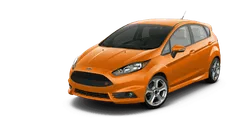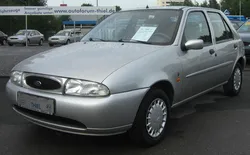

Ford Fiesta MK4: Explore the Best Options
Discover the Ford Fiesta and Ford Fiesta MK4 options in Portugal. Learn about this popular car's features, performance, and more for your next purchase!
The Ford Fiesta Mk4, produced from 1995 to 2002, marked a significant evolution in the long-standing lineage of the Fiesta series. Often celebrated as a quintessential small hatchback,...
Technical Specifications
Select Version
Dimensions
Engine
Driving
Others
History and Features
Mycarro AI
Apr 26, 2025
The Ford Fiesta Mk4, produced from 1995 to 2002, marked a significant evolution in the long-standing lineage of the Fiesta series. Often celebrated as a quintessential small hatchback, it gained popularity for its combination of practicality, performance, and style. During its production run, the Mk4 represented a turning point in the compact car market, as it adapted to the changing demands of consumers and the automotive industry as a whole.
Design and Features
One of the notable highlights of the Mk4 Fiesta is its modernized design. The model features a sleeker profile, rounder edges, and a more aggressive front fascia compared to its predecessor. The introduction of a more aerodynamic shape contributed not only to aesthetics but also to improved fuel efficiency and handling. The cabin was designed with user-friendly controls and offered ample space for both passengers and cargo, which was a notable improvement over previous generations.
Available in various trims, including the sporty Zetec and the more utilitarian LX, the Mk4 Fiesta catered to a wide range of drivers. The availability of options such as air conditioning, electric windows, and a sunroof ensured that consumers could personalize their vehicles as per their needs. Safety features also saw an upgrade with the inclusion of driver and passenger airbags in later models, reflecting Ford's commitment to passenger safety.
Performance and Efficiency
The Mk4 Fiesta offered a choice of engines ranging from economical 1.25-liter units to more robust 1.8-liter versions in the sporty Zetec S. The engines were paired with a five-speed manual or a four-speed automatic transmission, providing a balance of performance and fuel efficiency. The lightweight chassis of the Mk4 contributed to its responsive handling, making it a joy to drive, especially in urban environments.
Its nimble nature made the Fiesta Mk4 particularly appealing to younger buyers and first-time car owners. Furthermore, with fuel economy figures reaching up to 50 miles per gallon in some models, the Mk4 provided an attractive option amidst rising fuel prices during its production years. This combination of practicality and fun led to its reputation as an economical yet spirited driving choice.
Driving Experience
On the road, the Mk4 Fiesta offered a refined driving experience that stood out in the small car segment. The suspension system was adept at absorbing bumps and rough surfaces, promoting passenger comfort without compromising on the sporty driving dynamics that enthusiasts craved. The steering was responsive, providing adequate feedback and making it easy for the driver to maneuver through tight corners and bustling city streets.
Owners often praised the Mk4 Fiesta for its reliability and low maintenance costs. Parts were relatively inexpensive and easy to source, contributing to its popularity among budget-conscious consumers. This dependability further solidified the Mk4 as a practical choice, especially for individuals seeking their first car or those wanting a reliable vehicle for everyday use.
Market Impact and Legacy
The Ford Fiesta Mk4 played a significant role in cementing Ford's status in the compact car market during the late '90s and early 2000s. Its sales figures reflected its success, as it became one of the best-selling small cars in Europe. The reliability, style, and performance of the Mk4 helped to establish a loyal customer base, several of whom continued to choose Ford's compact offerings in subsequent generations.
After its production ceased in 2002, the Fiesta Mk4 continued to enjoy popularity among car enthusiasts and collectors. Classic car shows and enthusiast groups often feature Mk4 models, emphasizing the timeless appeal and engineering excellence of Ford’s design. Each aspect of the Mk4 Fiesta continues to resonate with drivers who appreciate concise, practical, and user-friendly vehicles that do not sacrifice driving pleasure.
Conclusion
The Ford Fiesta Mk4 remains a defining chapter in the history of compact cars. With its blend of innovative design, engaging driving dynamics, and practical features, it stood out in a crowded market. Today, it is remembered not only as a cherished vehicle for many but also as a model that contributed significantly to the legacy of the Fiesta brand. As generations evolve, the Mk4's impact still reverberates, reminding us of what made Ford’s small hatchback a staple of automotive engineering.
